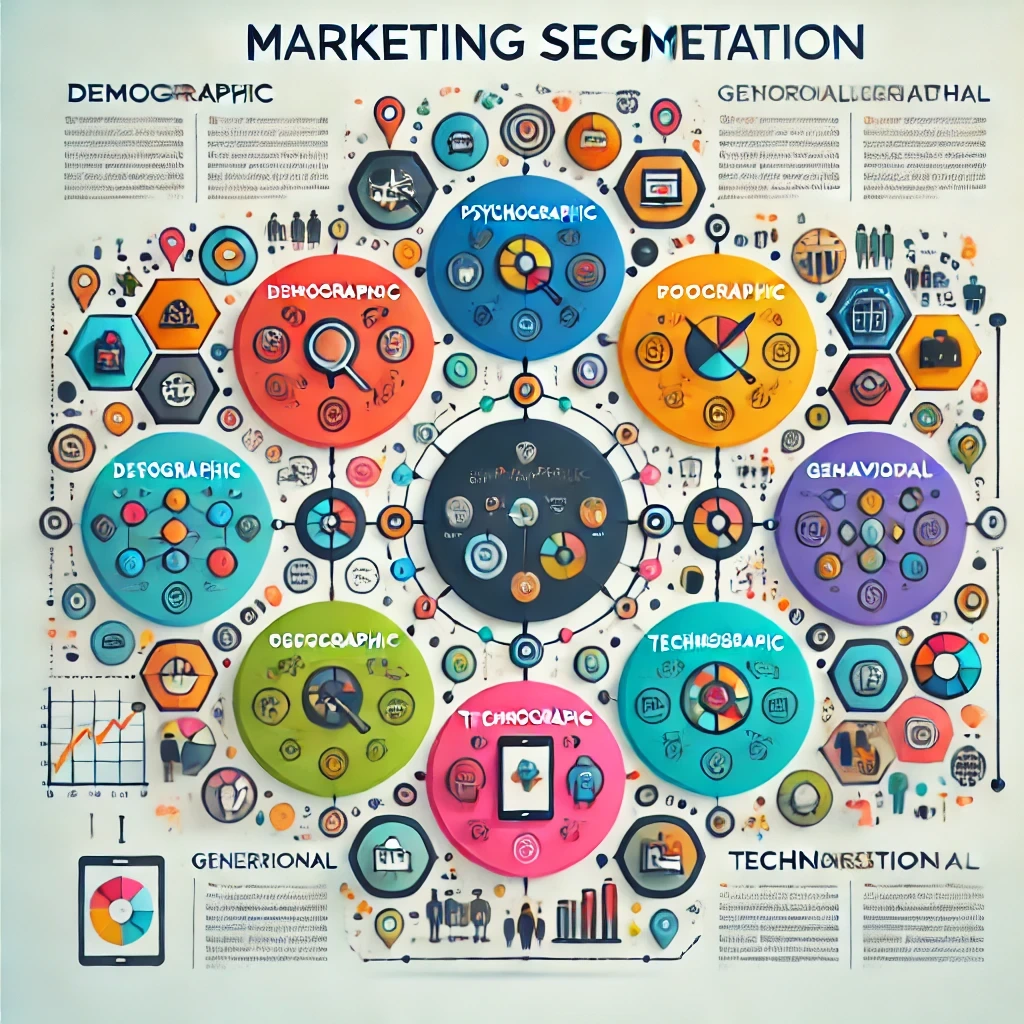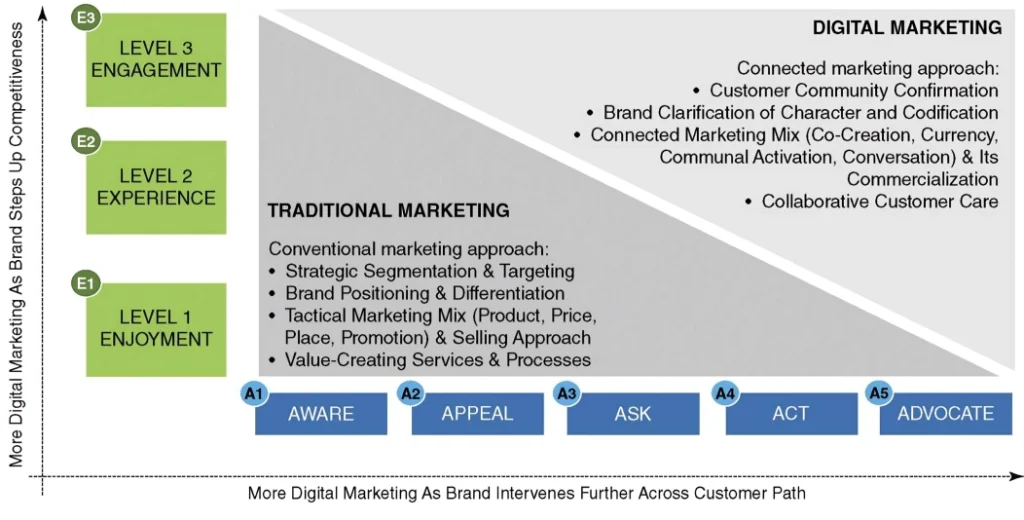Marketing Strategy Formulation
Every day, different products and services are introduced to the market, but how many do we know about? How many products have become successful businesses? Many businesses fail to penetrate or create a new market. One of the main reasons new or established businesses fail is the lack of strategy. Founders or managers often underestimate the importance of business and marketing strategy, viewing it as a time-consuming, unnecessary activity.
For a business to succeed, it’s essential for a company to formulate and implement business and marketing strategies. There are several factors and forces to consider when formulating and implementing a marketing strategy, or strategy in general. If we have a product or service, we need to examine what needs or problems it solves. If we don’t have a product or service, we need to look into the market and people to identify a problem we can solve. Once we find a problem and a solution in the form of a product or service, we need to analyze the market to understand current trends and conditions.
Once we have a basic product or service idea, we must segment, target the market, and position our offering accordingly. So, what are segmenting and targeting?
Segmenting
Segmentation is the process of dividing the whole market based on factors such as age, occupation, gender, income, lifestyle, country, state, or need. There are different types of segmentation that companies adopt according to their product and requirements. These types include:
- Demographic Segmentation: Based on factors like age, gender, income, education, and occupation.
- Psychographic Segmentation: Based on personality, lifestyle, social status, interests, opinions, and activities.
- Geographic Segmentation: Based on location factors such as country, region, state, province, town, climate zone, or zip code.
- Behavioral Segmentation: Based on customer behavior in the buying process, such as occasion, purchasing reason, and product benefits.
- Technographic Segmentation: Groups people based on the technology they use and how they interact with it.
- Generational Segmentation: Groups customers based on generation, such as Millennials, Gen Z, or Boomers.
- Transactional Segmentation: Divides customers based on previous interactions with the brand and their behaviors.

Targeting
Targeting is the process of selecting one or more segments that a business can serve profitably. This selection is made after evaluating each segment’s potential and analyzing them with the company’s accessibility and core competencies.
Once we choose our target market, we should conduct a macro and micro-environmental analysis. A macro-environment analysis can be done using PESTLE Analysis, while a micro-environment analysis can be conducted using Porter’s 5-Force Model.
PESTLE Analysis
PESTLE Analysis is a strategic framework that businesses use to understand the external factors influencing their success. The acronym stands for Political, Economic, Social, Technological, Legal, and Environmental factors. Here’s how each factor impacts business strategy and decision-making:

- Political Factors: Government policies, political stability, trade restrictions, tax policies, and labor laws. Political conditions can directly affect a company’s operations and profitability.
- Economic Factors: Elements that influence economic performance, such as inflation rates, interest rates, and employment levels, impacting consumer purchasing power and business costs.
- Social Factors: Social trends, demographics, and cultural attitudes. For instance, an emphasis on health may influence a company to develop more sustainable products.
- Technological Factors: Technological advancements like automation, R&D, and cybersecurity, which impact how a company operates or competes.
- Legal Factors: Regulatory issues, including employment laws and consumer protection laws, which businesses must comply with to avoid fines and maintain reputation.
- Environmental Factors: Climate change, sustainability, and natural resource availability, which affect businesses due to consumer demand and regulatory pressures.
Once the macro-environment factors are analyzed, companies need to examine the immediate environment to determine their strategic position. Harvard Business School professor Michael Porter proposed the 5-Force Model, which helps businesses understand the industry dynamics beyond their direct competitors.
Porters 5-Force model
- Competitive Rivalry: The intensity of competition among existing market players.
- Threat of New Entrants: The ease of entering the market by new competitors.
- Bargaining Power of Suppliers: The influence suppliers have over the industry, potentially affecting costs.
- Bargaining Power of Buyers: Prices and quality are influenced by the power of customers.
- Threat of Substitutes: The availability of alternative products that satisfy the same need.

After analyzing competition, companies can decide on their positioning strategy. Positioning is how a brand or product is perceived by consumers relative to competitors. It’s about creating a distinct, desirable place for a product in the market, aligning it with attributes that resonate with target customers. Positioning is based on factors like value, price, and product or service differentiation.
Based on the desired position and target segment, companies should decide on the marketing mix. The famous 4Ps of marketing are Product, Price, Place, and Promotion:
Product: What a company offers to meet customer needs, including design, features, and quality.
Price: The amount customers pay, impacting perceived value and demand.
Place: The distribution channels and locations where the product is sold.
Promotion: Methods used to communicate and persuade customers, such as advertising and social media.
Other Ps:
People: The employees involved in the business, from marketing to customer service.
Process: Describes the process of delivering a product or service.
Physical Evidence: Tangible proof of the brand’s existence, like stores, websites, and receipts.
As you now understand the major 4Ps and the other 3Ps. Now then companies should offer the product following the positioning strategy they choose and the target market they focusing on. The price of the product should well align with the positioning, if positioned as premium, the price should be premium. There are different pricing strategies that a company should consider. Placement and distribution strategies should also be well aligned with the positioning strategy, that is, an affordable product should be available in a convenience store and the premium product should be placed in a premium store and the brand’s store which communicates the brand position well. Promotional activities should communicate company values through proper channels.
Companies should consider 4Cs in the connected world to accommodate evolved customer participation. This is proposed in Marketing 4.0 co-authored by Philip Kotler, Hermawa Kartajaya and Iwan Setiwan. The 4Cs consist of co-creation, currency, community activation, and conversation.
In the digital economy where customization and personalization are the key, co-creation is the new product development strategy. Companies can involve customers in the ideation stage, this helps companies to increase their success rate and customers will feel the product they made.
In the digital era pricing is no longer standardized, it’s dynamic. Companies now set flexible prices based on market demand and capacity utilization, although it is not new to the healthcare and airline industry. The currency is of different value now depending on the customer, demand, and time. This can be done with help and big data analytics, by which companies can offer unique pricing for each customer.
With advanced technologies, the concept of channels is also changing. Peer-to-peer distribution is the most potent distribution concept. The rise of 3-D printing will spur this peer-to-peer distribution even more soon. This is the essence of communal activation.
Promotion is now more conversational than one-sided before. This is made possible by social media and advancements in technology. Now customers respond to the promotional messages and most of the promotions are customer-engaging.
It’s not that the traditional marketing has no role in this modern era, both co-exist. The core principles are always the same but the implementation and factors to consider changes eventually. Please the figure below (taken from Marketing 4.0 co-authored by Philip Kotler, Hermawa Kartajaya and Iwan Setiwan).

Branding
The company should plan its Branding strategies once the target customer, positioning, and marketing mix are decided. Branding is nothing but communicating the positioning of the company. All marketing strategies are based on segmentation, targeting, and positioning (STP). As a company discovers different consumer needs in the marketplace, it targets those it can satisfy in a superior way, and it positions its offerings so the target market recognizes its distinctive products and images. Companies can build customer advantages by delivering high customer value and satisfaction, which leads to high repeat sales and profitability. The American Marketing Association defines a brand as “a name, term, sign, symbol, or design that identifies or differentiates a product or service from those offered by a competitor.” Once all these are set, the company should plan implementation by considering the marketing funnel.
Reference
- Marketing 4.0 co-authored by Philip Kotler, Hermawa Kartajaya and Iwan Setiwan.
- Michael Porter, Harvard Business Review.
